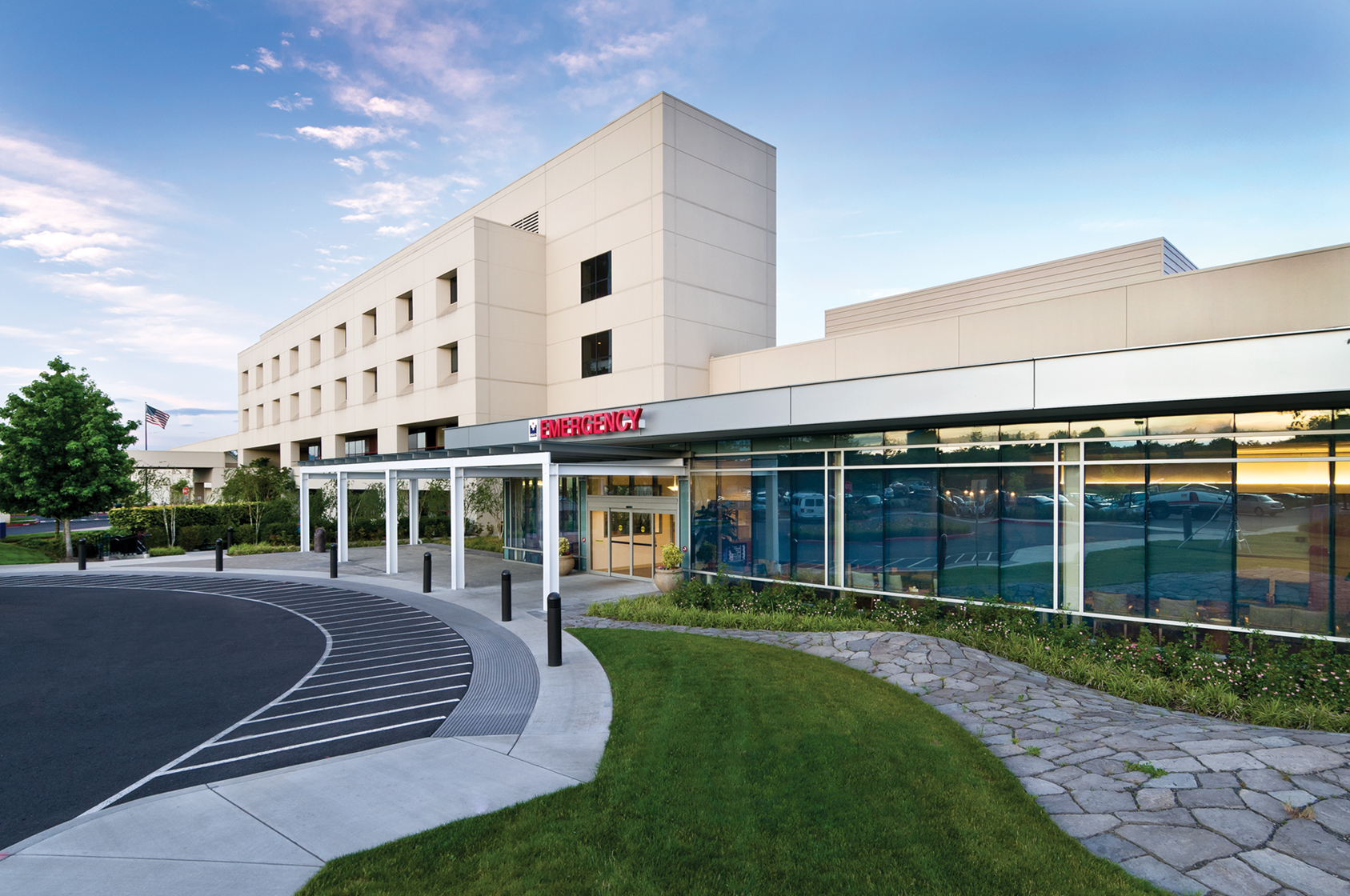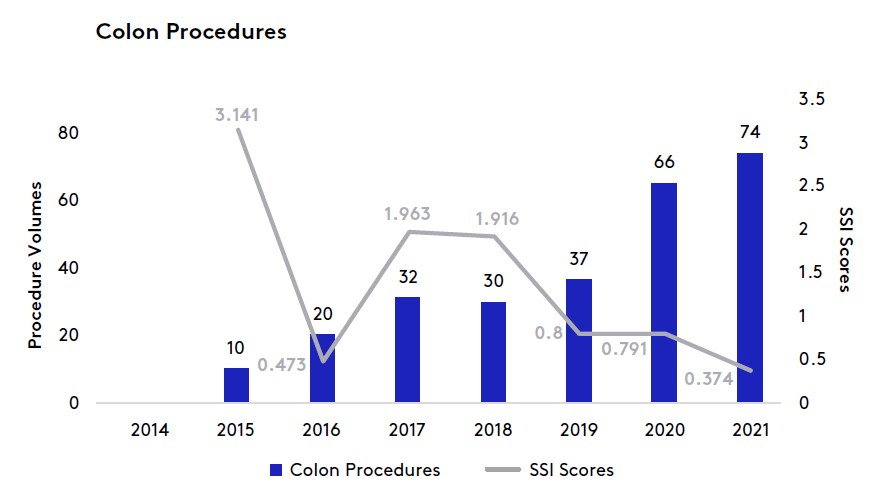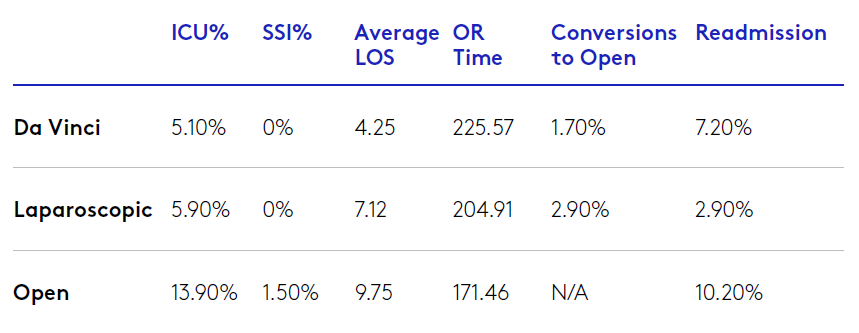

Legacy Mount Hood Medical Center, a community hospital based in Gresham, Ore., was grappling with ways to lower its colon surgical site infection rate.
Legacy Mount Hood’s SSI challenges largely arose from the medical center’s inability to consistently provide minimally invasive surgery (MIS) for general surgery and colon cases. That shortcoming caused the medical center to send many colon cases to hospitals farther away. Not only did the referrals represent a revenue loss, but they also placed a travel burden on the hospital’s lower income and rural patient populations.
A high rate of colon surgical site infections (SSI) triggered financial penalties for Legacy Mount Hood Medical Center, a community hospital, in 2015. Based on a standard 1% annual penalty, the Centers for Medicare & Medicaid Services (CMS) ultimately reduced the medical center’s reimbursements by an estimated total of $585,000.
Each year, 160,000 to 300,000 U.S. patients develop a surgical site infection in the days or weeks following their operations. These complications:1

Legacy Mount Hood’s initial solutions achieved only modest success. The hospital implemented several changes, but it wasn’t until the expanded use of da Vinci robotic-assisted surgery (RAS) that SSI rates, and CMS penalties declined while increasing case volume.
Not only have annual colon RAS volumes risen at Legacy Mount Hood, but the hospital’s colon resection standard infection ratio (SIR) is now among the nation’s best.

Legacy Mount Hood achieved shorter hospitalizations and faster recoveries by transitioning to RAS. The general surgery team felt comfortable providing colon patients the chance to stay closer to home. Legacy Mount Hood was able to upgrade and expand its pool of da Vinci systems, solidify its finances, and free beds for other needs.
From 2017 to 2022, colon RAS at Legacy Mount Hood largely outperformed both open approaches and traditional laparoscopic techniques in clinical measures.

Interested in learning more about Legacy Mount Hood’s experience? Complete the form below and an Intuitive representative will be in touch to help arrange a conversation.
By submitting my information, I am agreeing to receive information regarding Intuitive products and services and related topics. More information may be found in our privacy policy.

Thank you for your submission.
Financial disclosure
The independent institution and its represented physicians quoted in this study have not received compensation from Intuitive for consulting and/or educational services.
Additional Information
For background information, study information, congruency and typicality, and safety information, visit, https://go.intuitive.com/1112637-01
Surgical risks
Bowel resection and other colorectal procedures (colectomy, sigmoidectomy, low anterior resection, abdominopelvic resection (APR), intersphincteric resection, proctectomy, rectopexy): anastomotic leak, anastomotic stricture, colorectal or anorectal dysfunction.
Important safety information
Serious complications may occur in any surgery, including surgery with a da Vinci system, up to and including death. Examples of serious or life-threatening complications, which may require prolonged and/or unexpected hospitalization and/or reoperation, include, but are not limited to, one or more of the following: injury to tissues/organs, bleeding, infection, and internal scarring that can cause long-lasting dysfunction/pain.
Risks specific to minimally invasive surgery, including surgery with a da Vinci system, include but are not limited to, one or more of the following: temporary pain/nerve injury associated with positioning; a longer operative time, the need to convert to an open approach, or the need for additional or larger incision sites Converting the procedure could result in a longer operative time, a longer time under anesthesia, and could lead to increased complications. Contraindications applicable to the use of conventional endoscopic instruments also apply to the use of all da Vinci instruments.
For important safety information, including surgical risks and considerations, please also refer to www.intuitive.com/safety. For a product’s intended use and/or indications for use, risks, full cautions, and warnings, please refer to the associated user manual(s).
Individual outcomes may depend on a number of factors—including but not limited to—patient characteristics, disease characteristics, and/or surgeon experience.
Da Vinci Xi/X system precaution statement
The demonstration of safety and effectiveness for the representative specific procedures did not include evaluation of outcomes related to the treatment of cancer (overall survival, disease-free survival, local recurrence) or treatment of the patient’s underlying disease/condition. Device usage in all surgical procedures should be guided by the clinical judgment of an adequately trained surgeon.
Physician/hospital disclosure
This material represents the views, experiences, and opinions of an independent institution based on their experiences with the da Vinci surgical system. This experience may or may not be reproducible and is not generalizable.
Economic disclosure
This single center’s economic outcome data is not peer reviewed and not published and may or may not be reproducible and is not generalizable. As such, the data reported should be considered informational only and not conclusive.